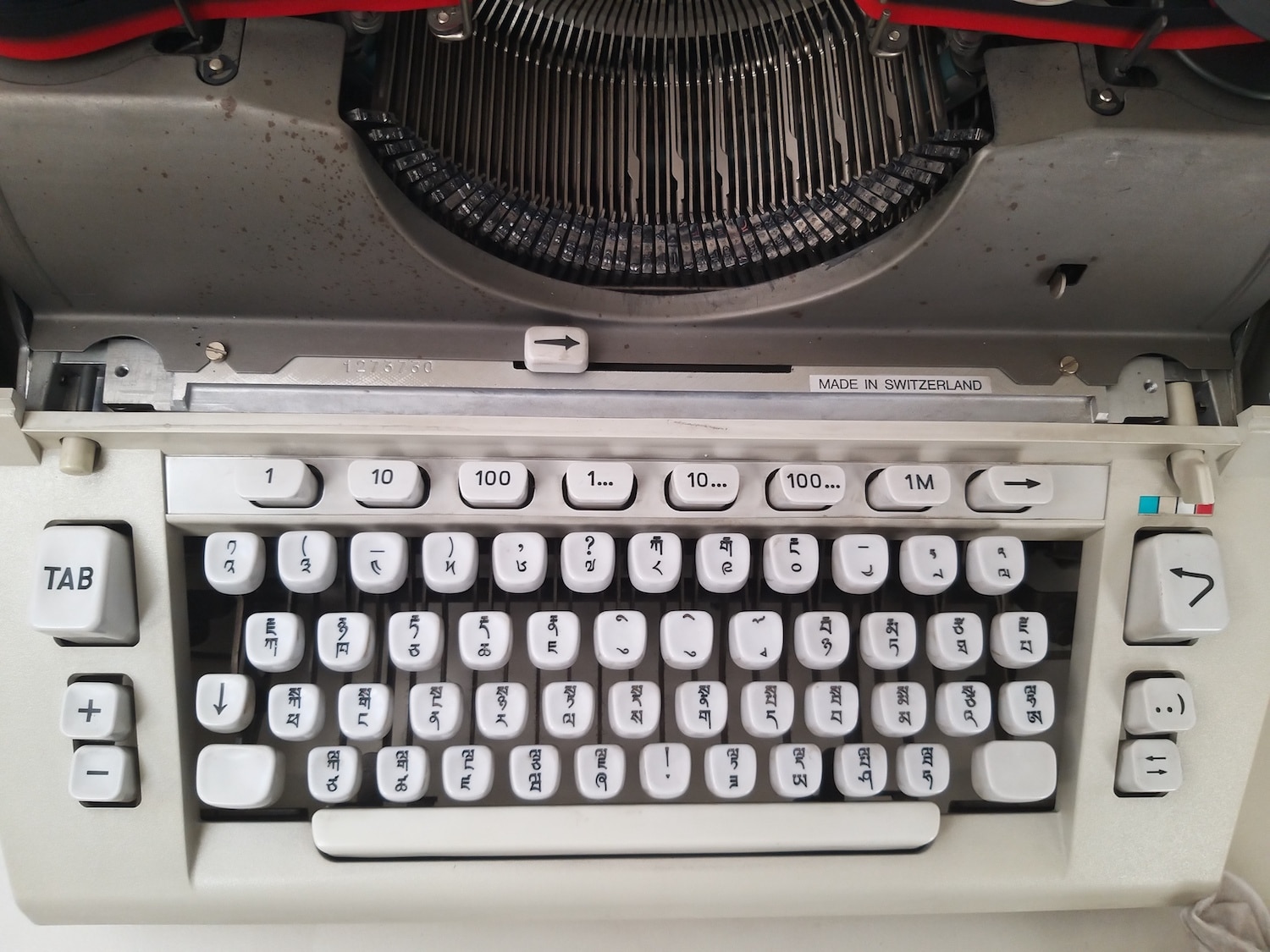
We take for granted that the Tibetan language is well integrated into our digital devices, and we are familiar with the venerable history of hand carved woodblock printing in Tibet. But going back 50 years, a chapter in the history of Tibetan literature that has largely been forgotten is that of mechanical typewriters.
Most people have never seen a Tibetan typewriter let alone had a chance to use one, but here we share some photographs and background information that provide a close up view of how they operated.
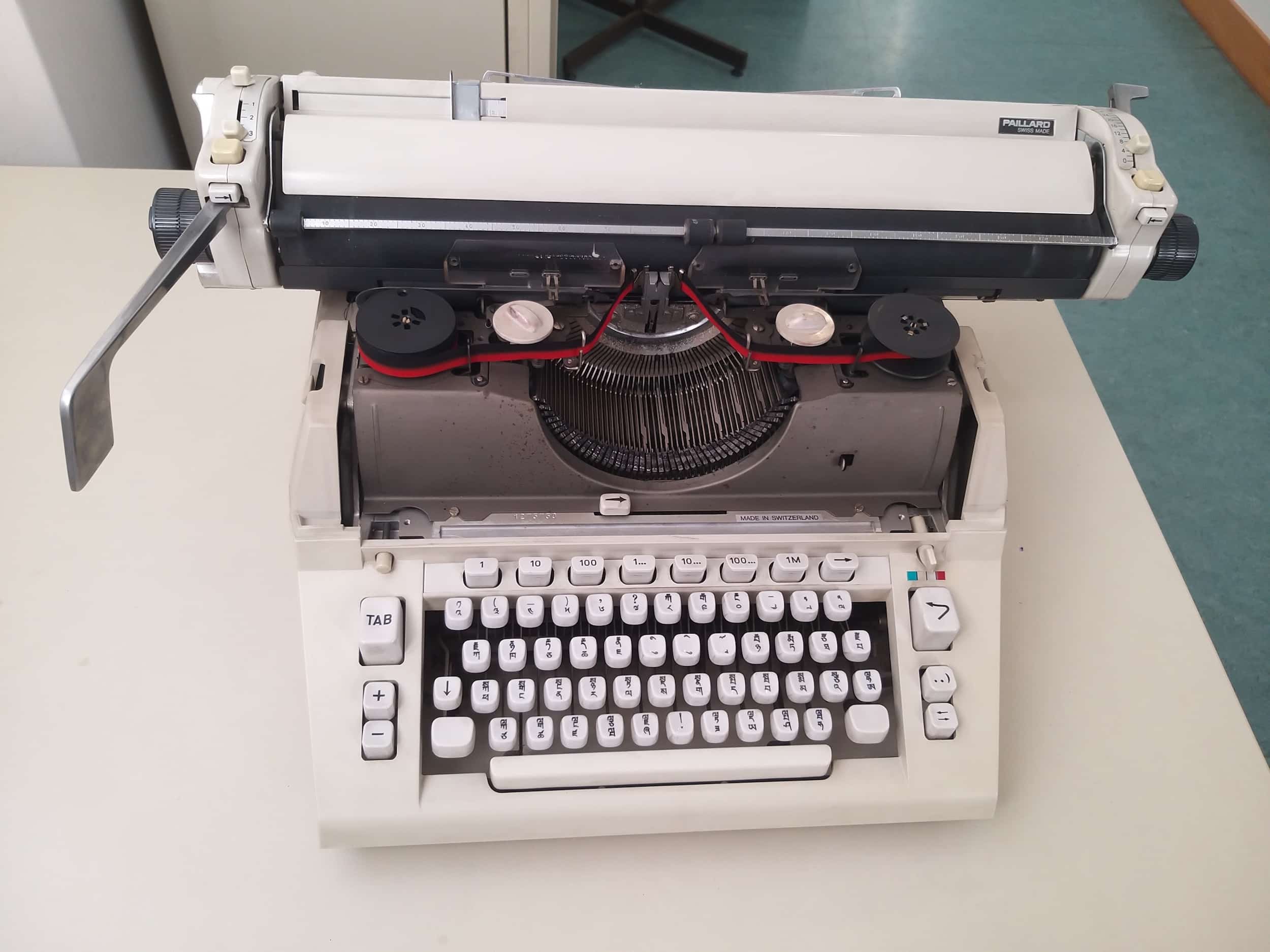
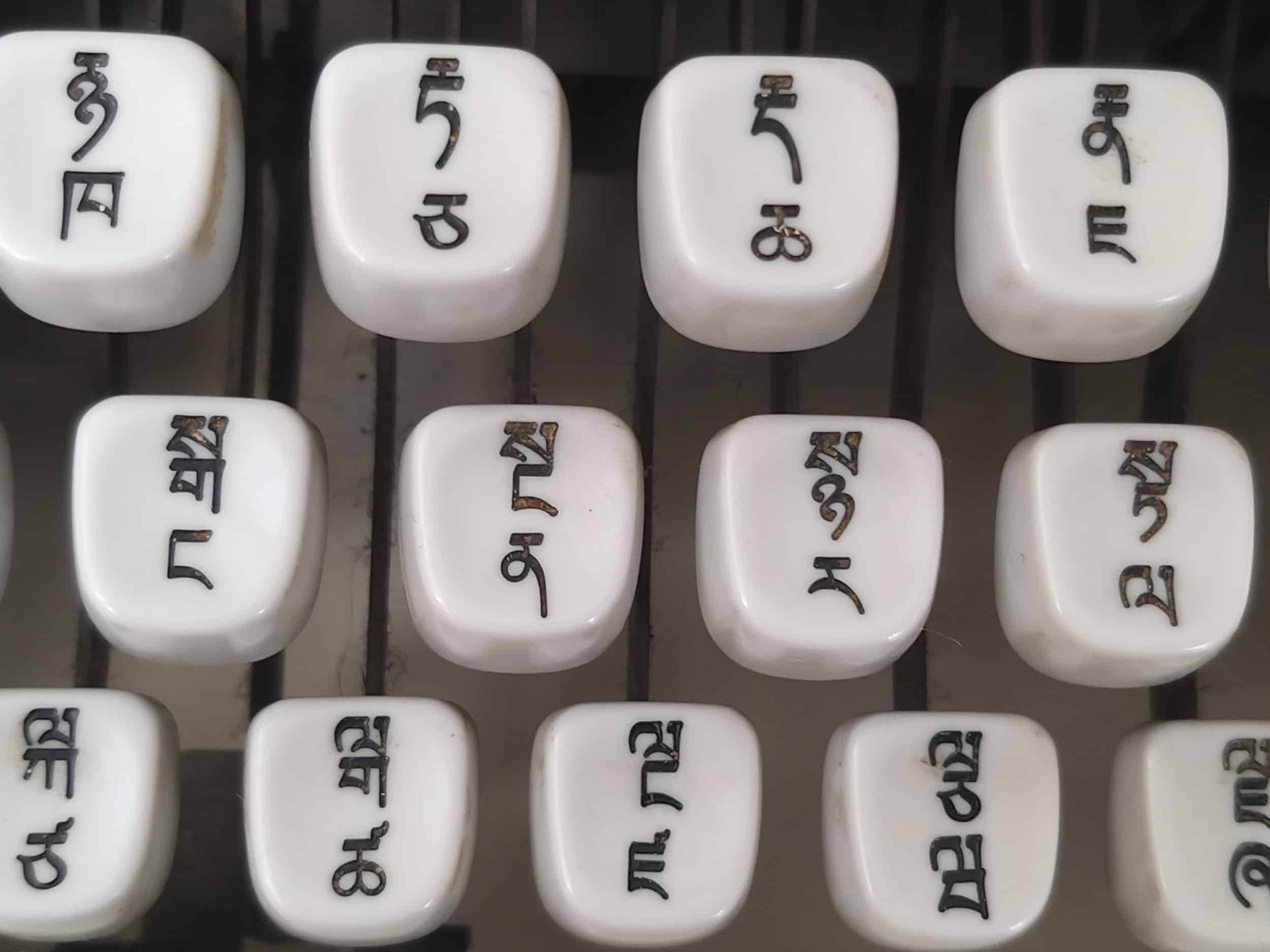
Tibetan typewriters were produced industrially in China, Japan, and India between 1965 and 1995, before they were replaced by computers. The full history will be documented in a future publication, but in essence it is tied to colonization, missionary work, modernization of Tibet (in India and China), and the development of Tibetan Studies in the West and in Japan.
Recently Jo de Baerdemaeker, author of Tibetan Typeforms, and BDRC's CTO Élie Roux went to Vienna to research the Tibetan typewriter and Tibetan font (meaning here a set of moveable type used with a printing press) held at the Institut für Südasien-, Tibet- und Buddhismuskunde of the University of Vienna. This trip was part of a research project that should lead to a peer reviewed publication in 2026, which will provide a perspective on the rapid evolution of Tibetan language technologies.
These two objects had never been studied before and we thank the Institut for allowing us access, and Bruno Lainé for pointing us to their existence.
The Tibetan typewriter located in Vienna is a Hermes Ambassador made by Paillard in Yverdon, French-speaking Switzerland, in 1973. The original keys were changed in Japan for a special set of Tibetan keys. Much more will be written about the history of this particular typewriter but we can say here that the key figure behind its development is Hiroshi Sonami a.k.a. Thartse Khen Rinpoche (1933-1987, BDRC P8LS13104), the 74 abbot of Ngor in Tibet.
The typewriter was used for typing courses at the University but also for a few publications from 1981. Remarkably it is still in working order as shown by the typewritten example below.
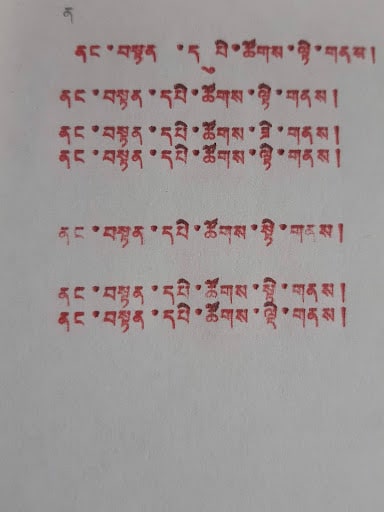 'Buddhist Digital Resource Center' typed in Tibetan.
'Buddhist Digital Resource Center' typed in Tibetan. The font (also known as a fount) is a complete set of metal type of the Tibetan alphabet, that was used by the Adolph Holzhausen printing house. Jo de Baerdemaeker took the opportunity to make an imprint of each character in the case, as shown below.
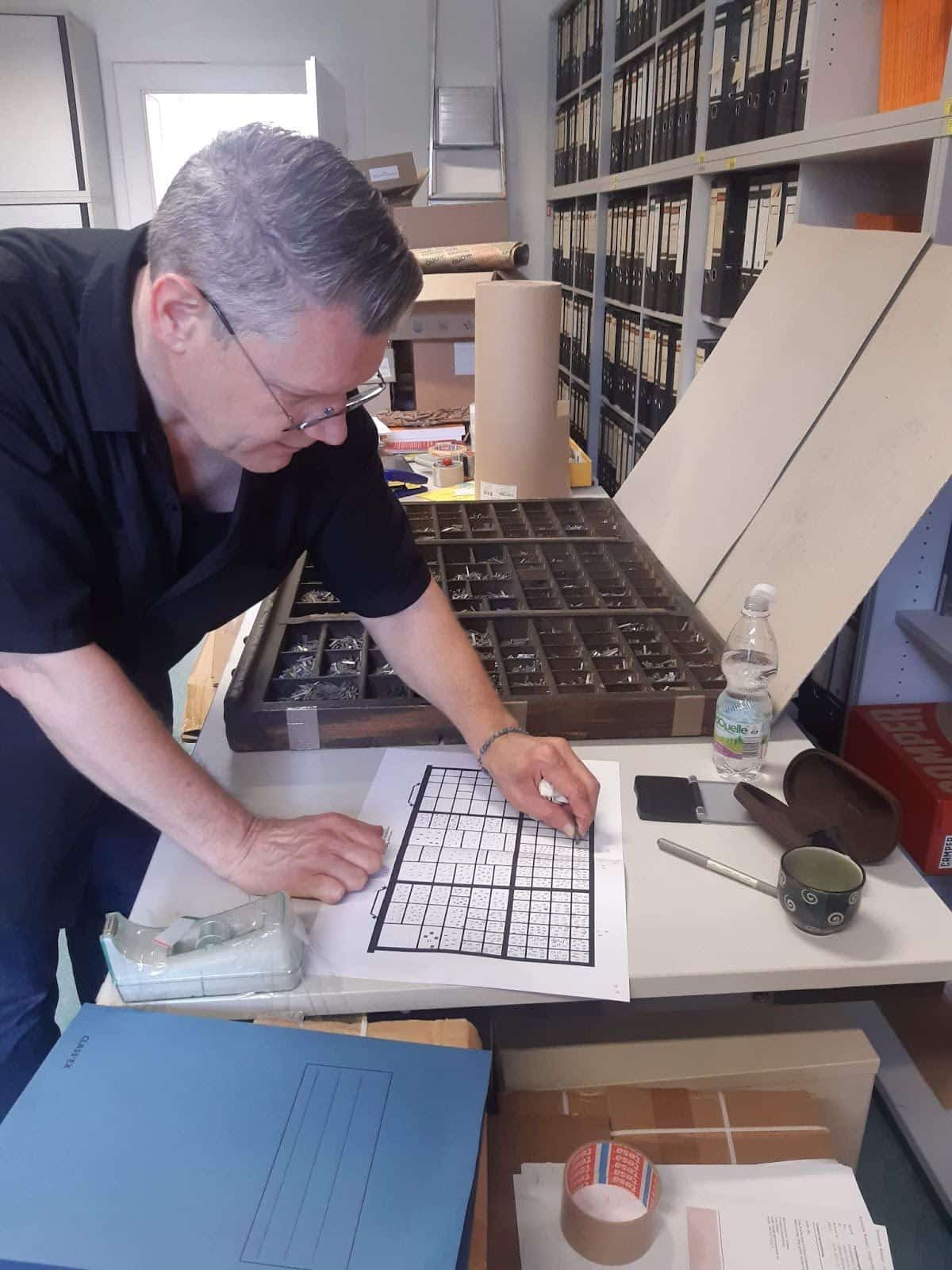
 Jo de Baerdemaeker making an imprint of each Tibetan character in the font.
Jo de Baerdemaeker making an imprint of each Tibetan character in the font. Below you can see the full set of imprints, and a rough example of typesetting using the font.
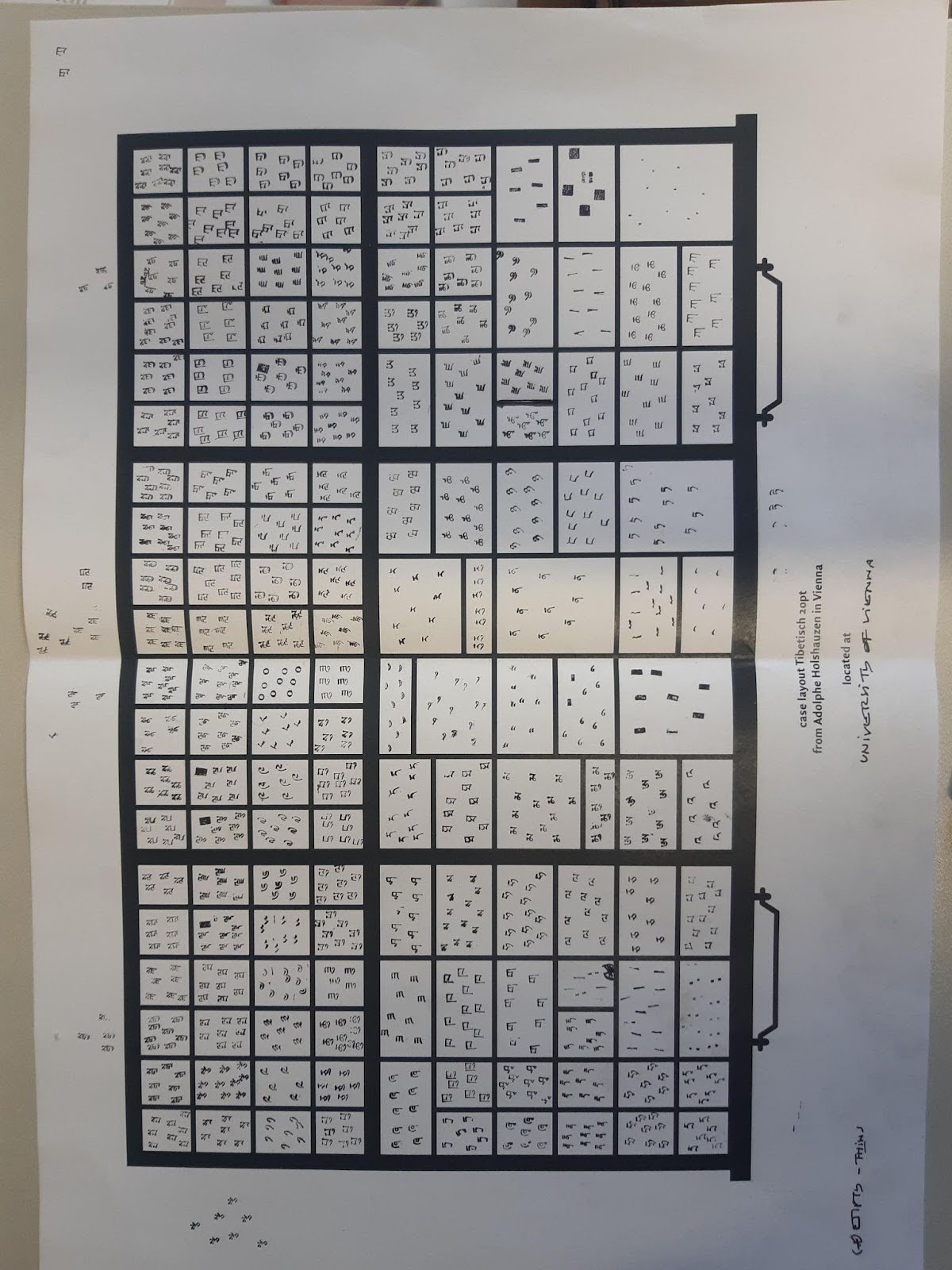

The study of the font is only now starting based on these imprints, but the current hypothesis is that it was used to typeset some of the works by Bacot, such as "Formulaire Sanskrit-Tibétain du Xè Siècle", 1924, that references the printery. The Institute also has two cases of a Devanagari font which is also undocumented but which fell outside of the scope of this research.
We are grateful to the University of Vienna for making this research possible, and we would like to thank Markus Viehbeck for organizing a gathering between different organizations (the University of Vienna, Asian Legacy Library and BDRC) where Élie and Jo presented on their findings. For those interested in learning more about this topic, we will share details of the full publication when it is available.





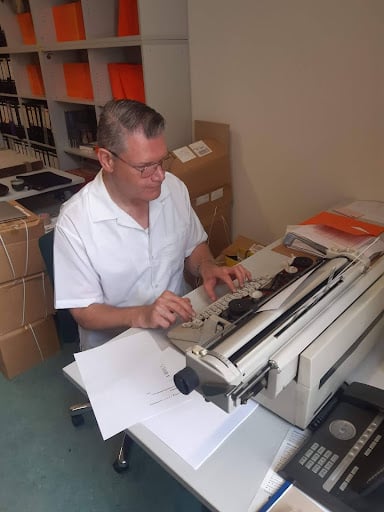
Sorry, the comment form is closed at this time.